Proceratosaurus. “Before Ceratosaurus“. I remember when I first laid eyes on the exquisitely preserved jaws of this animal, found in England from the rocks of the mid Jurassic. The picture was in most dinosaur books throughout the 80’s and 90’s, accompanied by a somewhat vague description usually saying that it looked like Ceratosaurus and Ornitholestes due to the nasal horns (in the case of Ornitholestes, the nasal horn never existed, as the fossil skull was somewhat warped). The top part of the skull was undoubtedly missing, though. This was later found to be a much more different animal than Ceratosaurus, and the discovery of Guanlong, Kileskus, Sinotyrannus, among others placed Proceratosaurus at the very base of the tyrannosaur family tree, and it helped cement the name Proceratosaurus as kind of a misnomer.
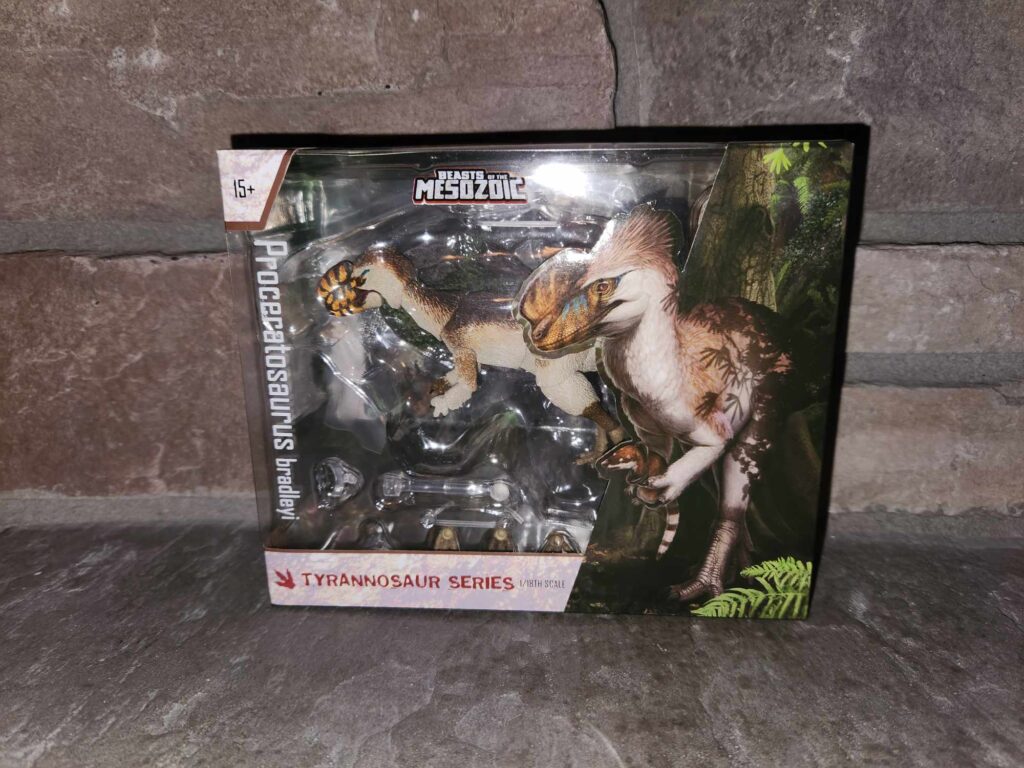
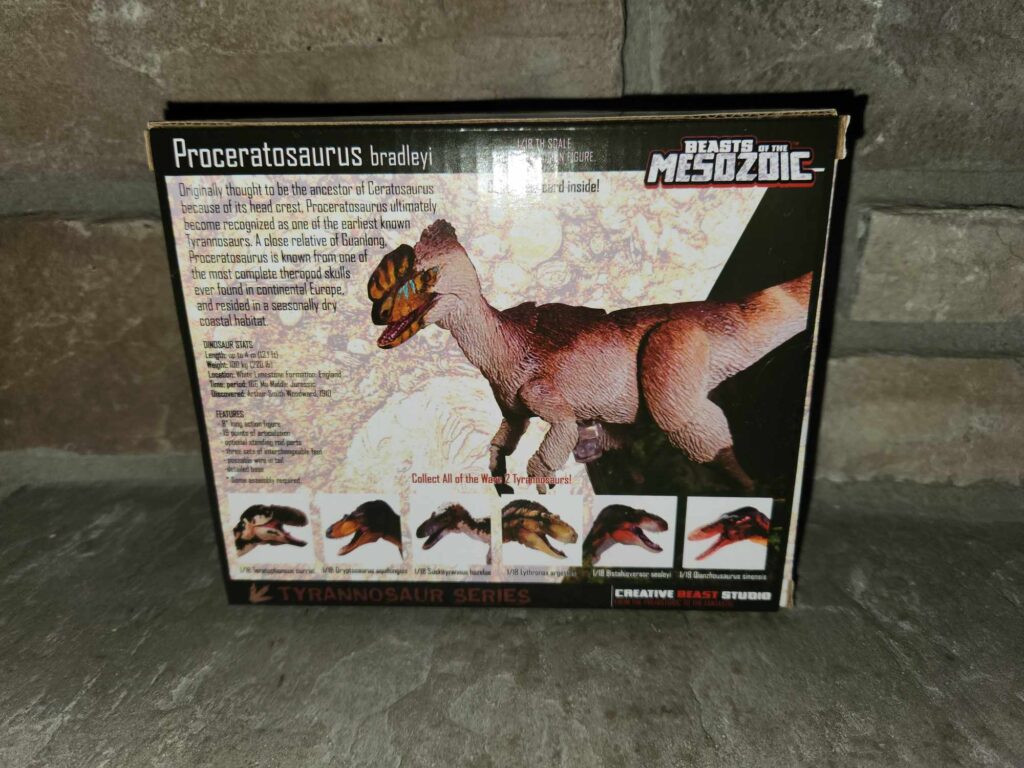
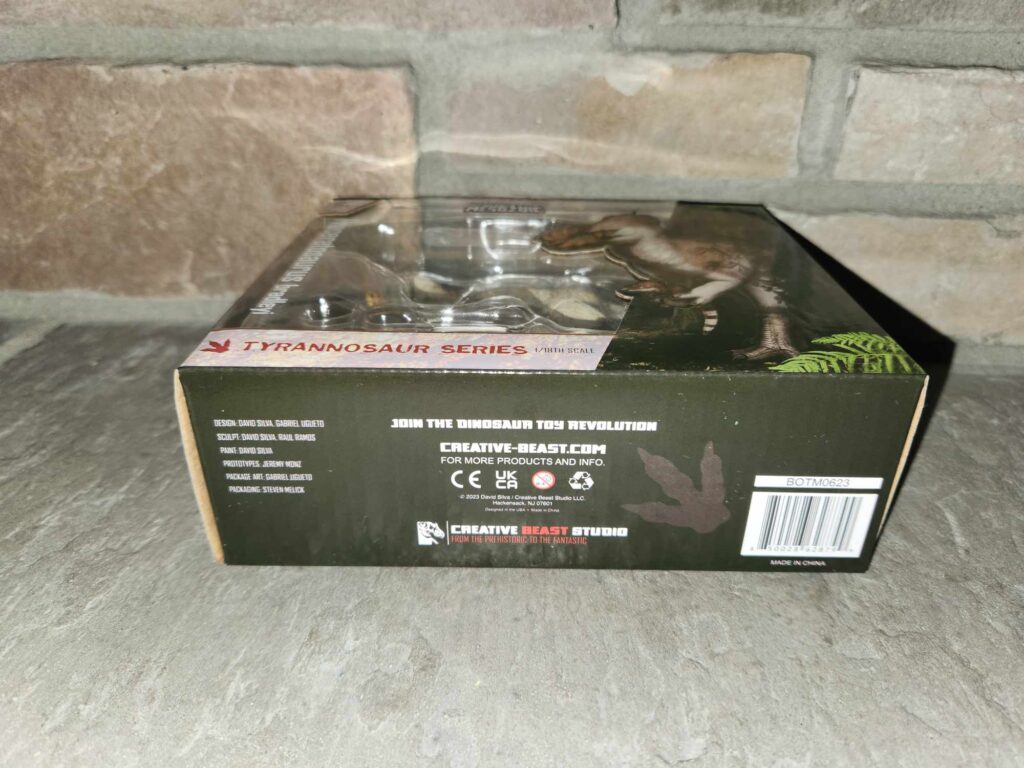
When Guanlong was discovered, it was revealed that Proceratosaurus‘ crest was probably long and delicate, just like Guanlong’s. The crest is also present in Sinotyrannus, though much less obvious, and once again, only the front portion above the nares remains. Together, along with Kileskus, Juratyrant and Stokesosaurus they now form the family proceratosauridae, which is a group of early tyrannosauroids that lived through the middle Jurassic to the early Cretaceous. Clearly not related to ceratosaurs, as it was once thought. The confusion was likely in part due to the similarities shared with Ceratosaurus given the information that was gathered at the time, but really it came down to the nasal crest, as far as similarities are concerned.
Let’s get to the actual figure now! The box is small, the same size as Guanlong’s, and it has a plastic see-through window just as all the other BOTM figures. The front has art of Proceratosaurus, drawn by my paisano Gabriel Ugueto, who is now one of the most prominent paleoartists of this era. The collector card also has the same painting on the front side. On the back of the box, as well as the card, you can find a picture of the actual figure.

A set of instructions unique to Proceratosaurus is included, showing you how to deal with your Proceratosaurus figure; two toe pads are supposed to point at each other, warm the tail in water in order to place it on the body, etc. By now we should all know how to deal with the quirks that often accompany Beasts of the Mesozoic products.

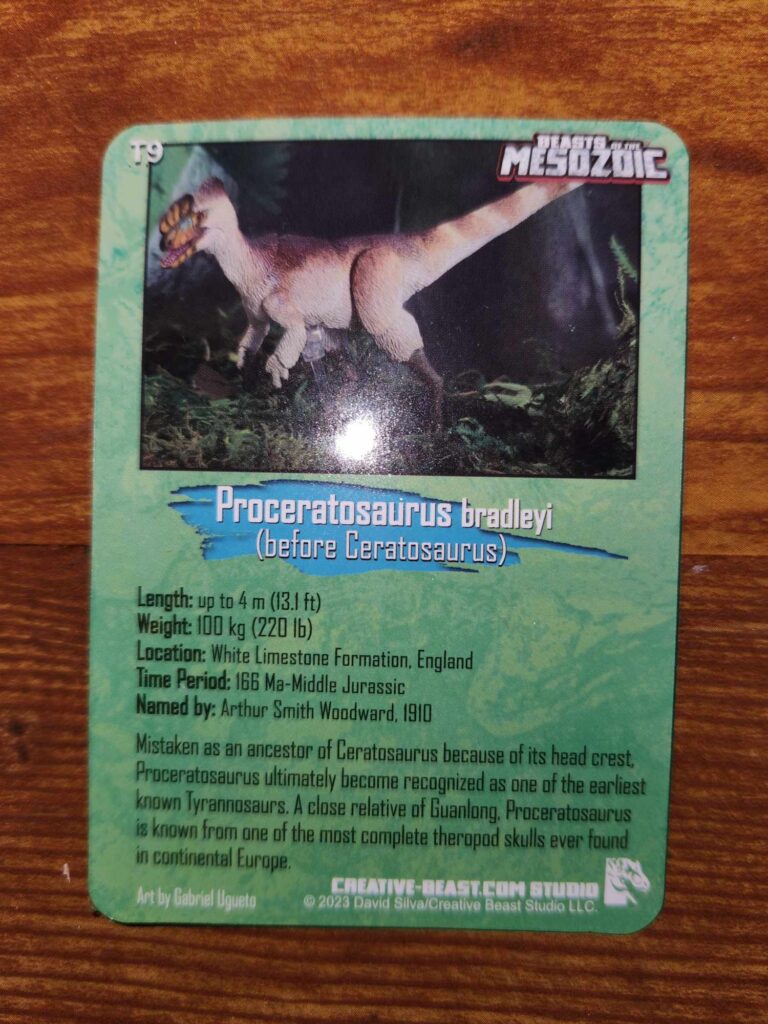
Proceratosaurus bradleyi
(Before Ceratosaurus)
Length: Up to 4 m (13.1 ft)
Weight: 100 kg (220 lb)
Location: White Limestone Formation, England
Time Period: 266 Ma-Middle Jurassic
Named by: Arthur Smith Woodward, 1910
Mistaken as an ancestor of Ceratosaurus because of its head crest. Proceratosaurus ultimately became recognized as one of the earliest known tyrannosaurs. A close relative of Guanlong, Proceratosaurus is known from one of the most complete theropod skulls ever found in continental Europe
Well, there you have it. The exquisitely preserved skull has been subject of several re-studies throughout the last 100 years. As I said before, the missing part of the top of the skull probably would probably have been a delicate, long nasal crest running all the way back on the head, similar to that of Guanlong. A recent study on cranial biomechanics of earlier tyrannosaurids showed that earlier tyrannosaurs, like Proceratosaurus, had a smaller bite force than its later descendants, and higher cranial stress than its more robust and later cousins. You can see just how delicate the jaws are when looking at the skull of Proceratosaurus. It is thought that the crest may have had 2 functions: one to aid in biting down on prey. adding an extra reinforcement for the whole skull, and for display, species recognition, and mating. Tyrannosaurs with broader skulls had a significantly greater bite force, with Tyrannosaurus rex having the biggest bite force of all time, which was revealed by numerous studies throughout the years. The whole study can be found here. The cool thing is that David Silva’s team provided 3d renderings of Proceratosaurus‘ skull and Dilong’s for the study.
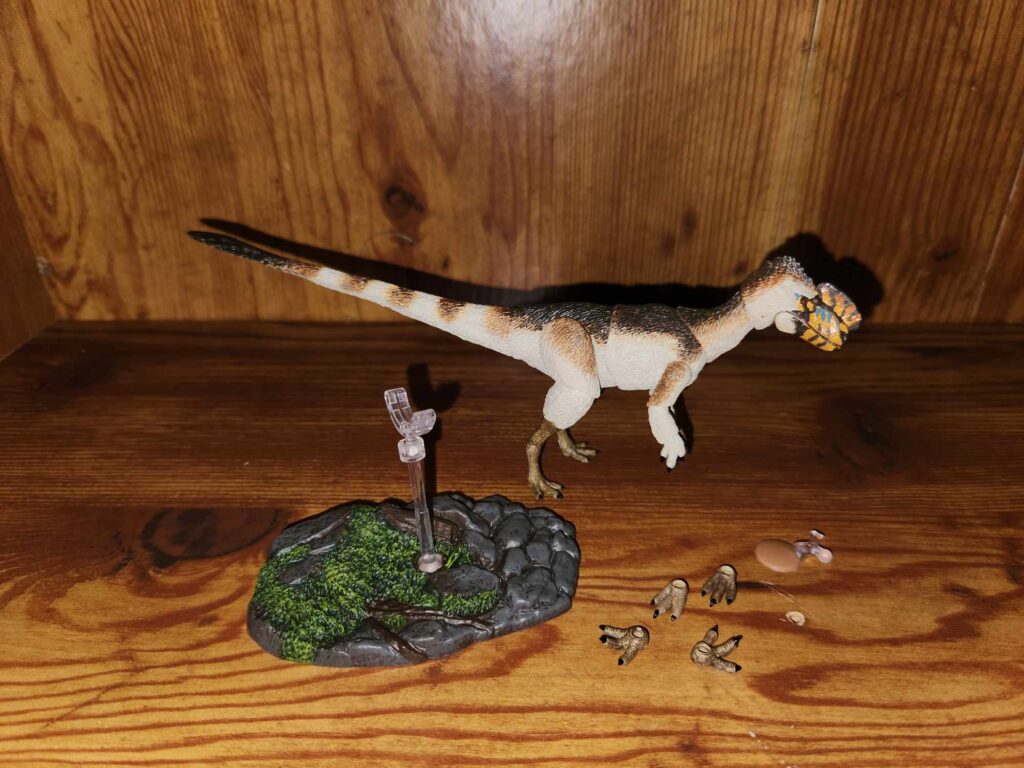
The figure measures 8 inches long (1/18 scale), has 19 points of articulation, and it includes a stand (same mold as Guanlong, but differently colored), and extra feet for different poses. As you know, I am personally not a fan of the extra feet, which are super small, and easily lost. I would have preferred a ball joint on a swivel for the metatarsals and feet. The clear plastic rod on mine is very loose, so I have a lot of issues propping Proceratosaurus on it. Luckily it can stand on its own.
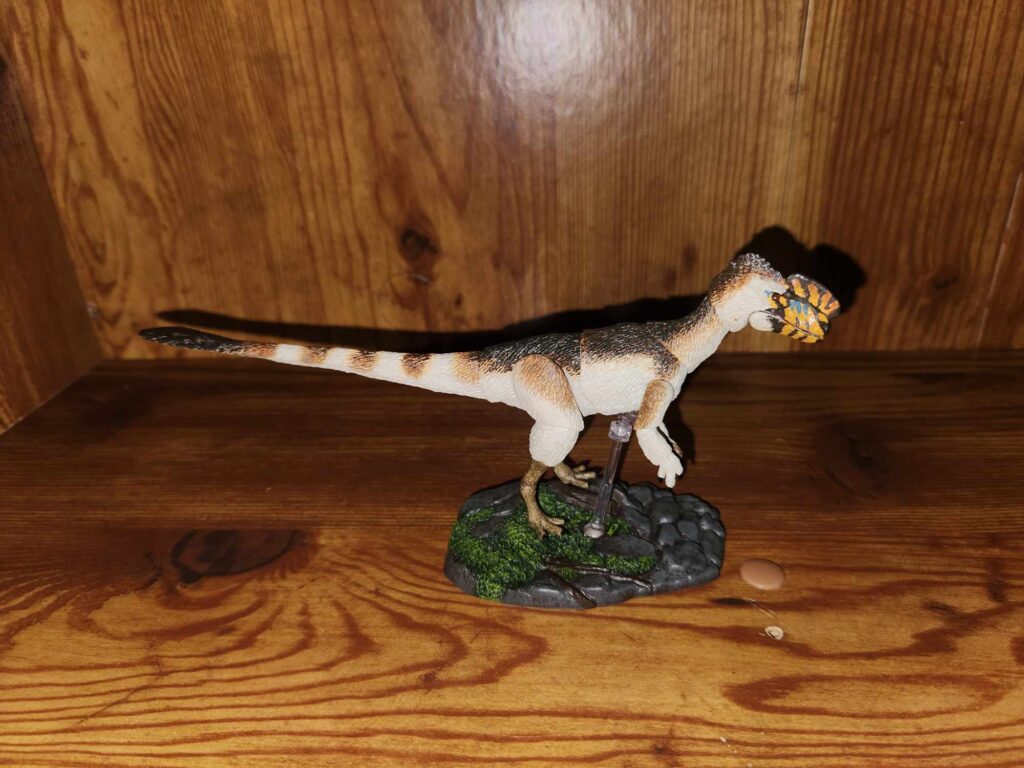
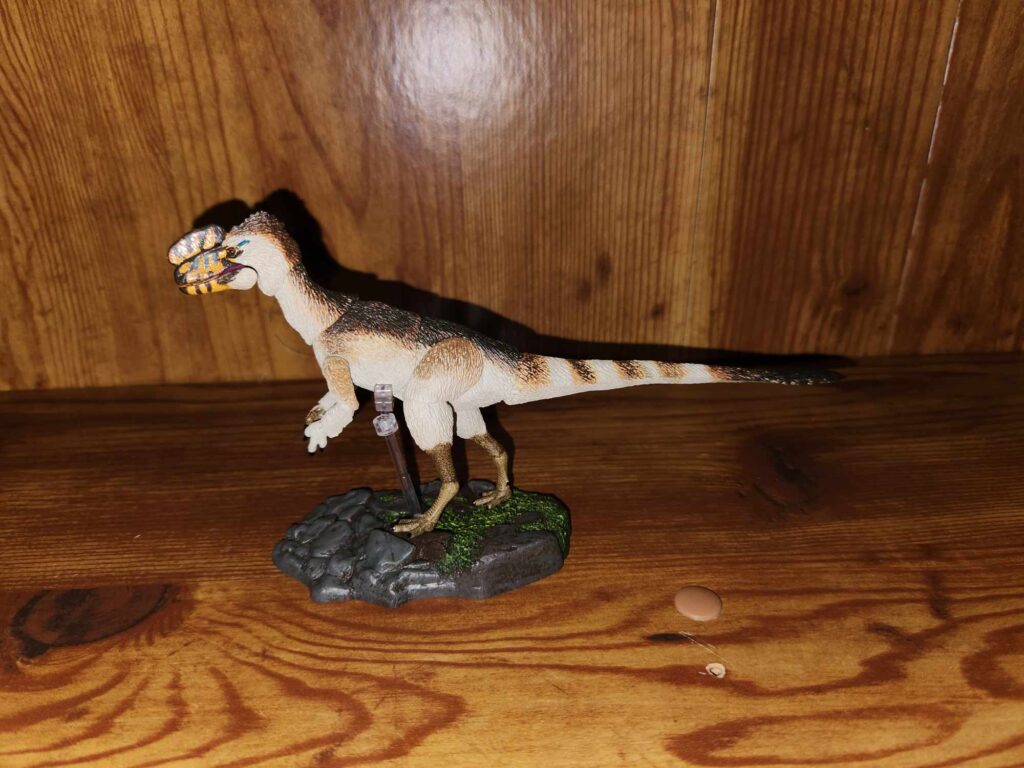
Sadly, I did not take a picture of it standing on its own, as it is supposed to always be on the stand. I also did not take pictures of the figure with the different feet, as they are rather hard to unplug and plug in. and I did not want to risk washing them with hot water and accidentally dropping a foot into the sink. I am notoriously clumsy, and did not want to bother David Silva with another foot request. I don’t know why, but as I explained with Guanlong, and my reviews of the raptors, the extra parts just stress me out because I do not want to lose them, and I do not have anywhere to put them. There are no pegs underneath the bases for these figures to hide the extra parts in, but they are hollow enough so that you can hide them under the base.
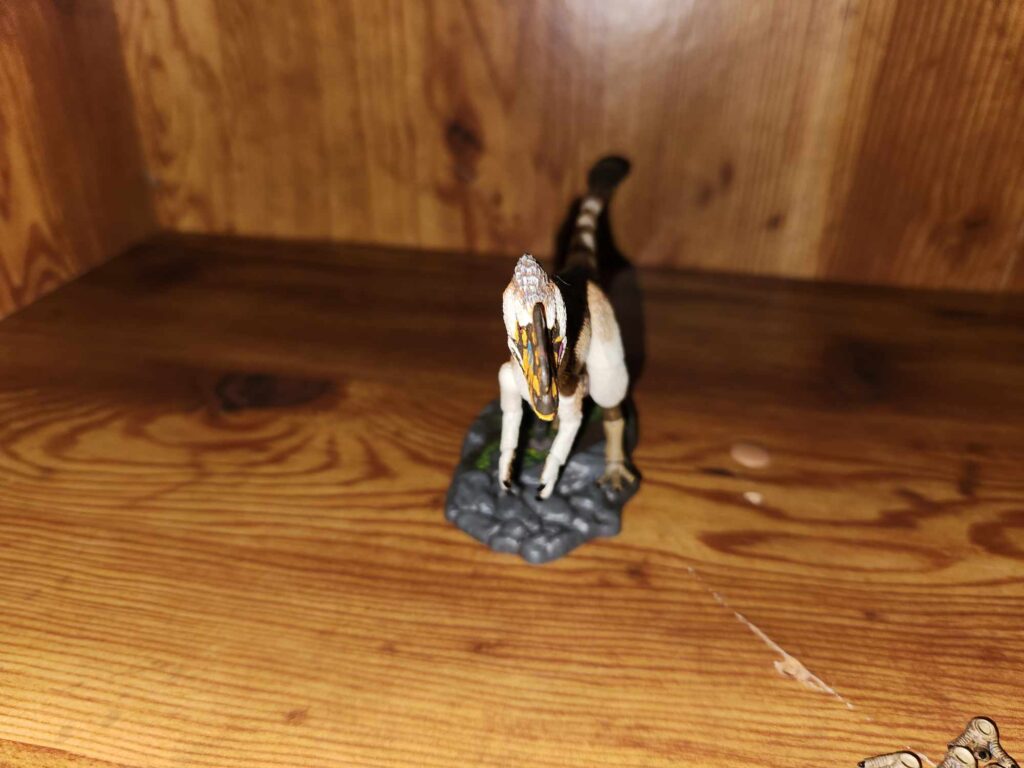

Its color is based on the critically endangered Bali Myna, even though those birds are mostly white, with some other coloring visible, but minimal due to the extensive white plumage. Proceratosaurus has a striped tail, whose end has dark brown feathers, which become lighter brown stripes around the light cream tail. The tail is wired so one can pose it however they want, which I consider to be a prized feature. The rest of the body has cream feathers, and a dark brown feathering on the back. The tarsals, metatarsals and digits, including the manual digits, are all speckled brown and each digit ends in deadly, black claws.
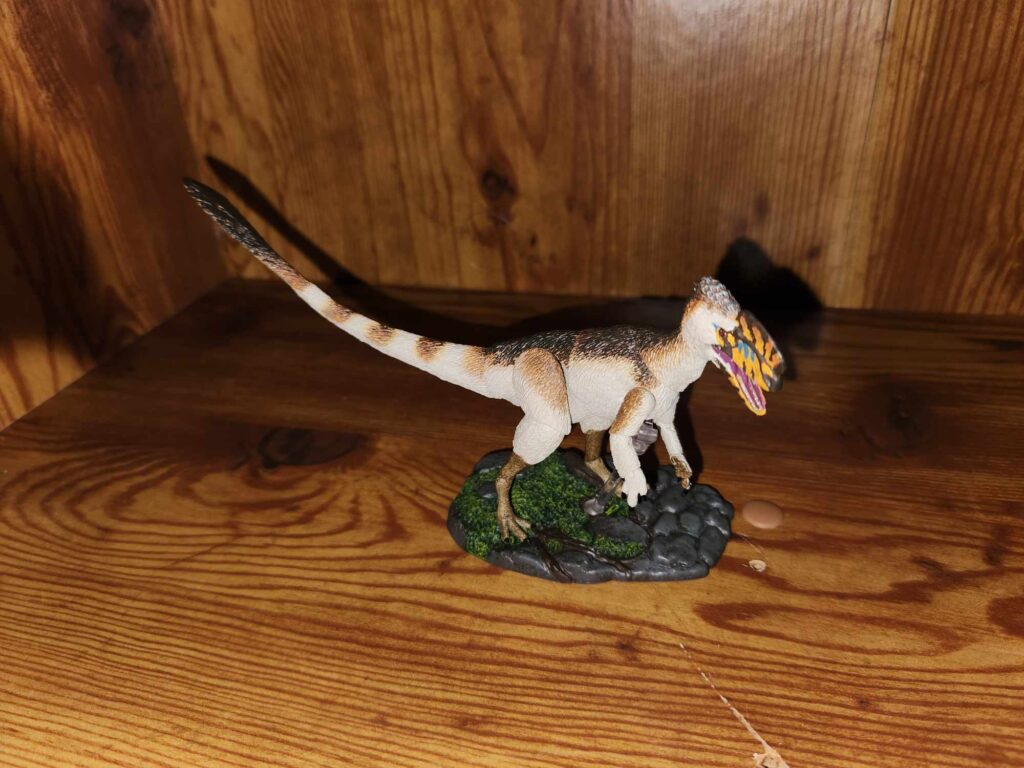
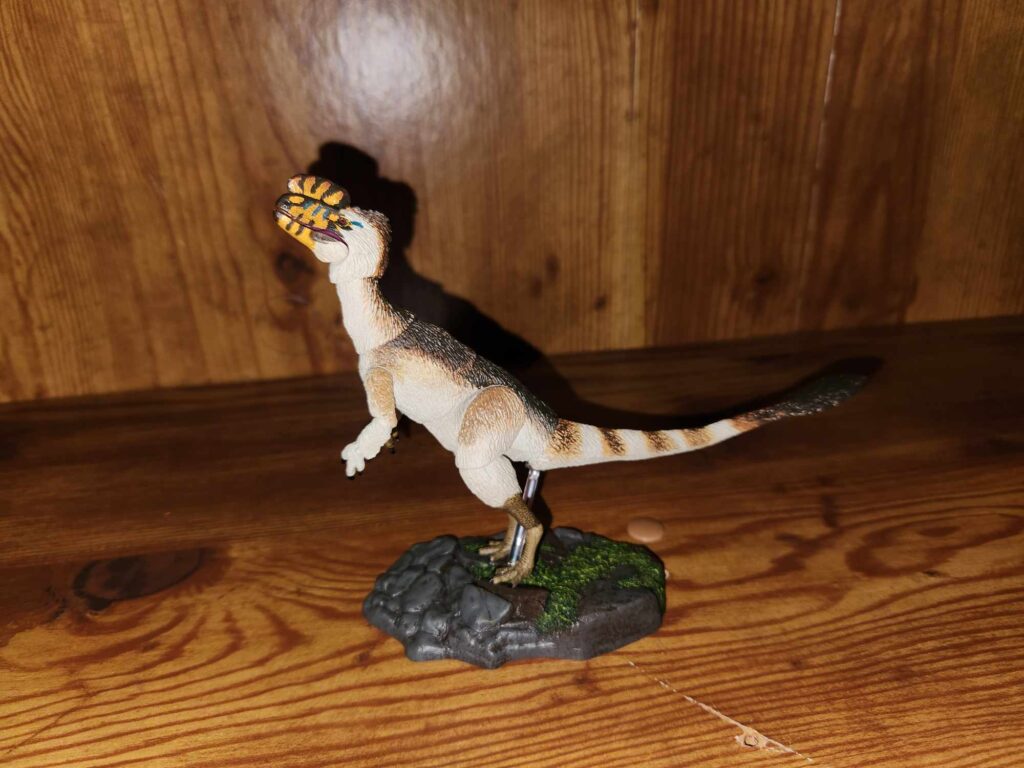
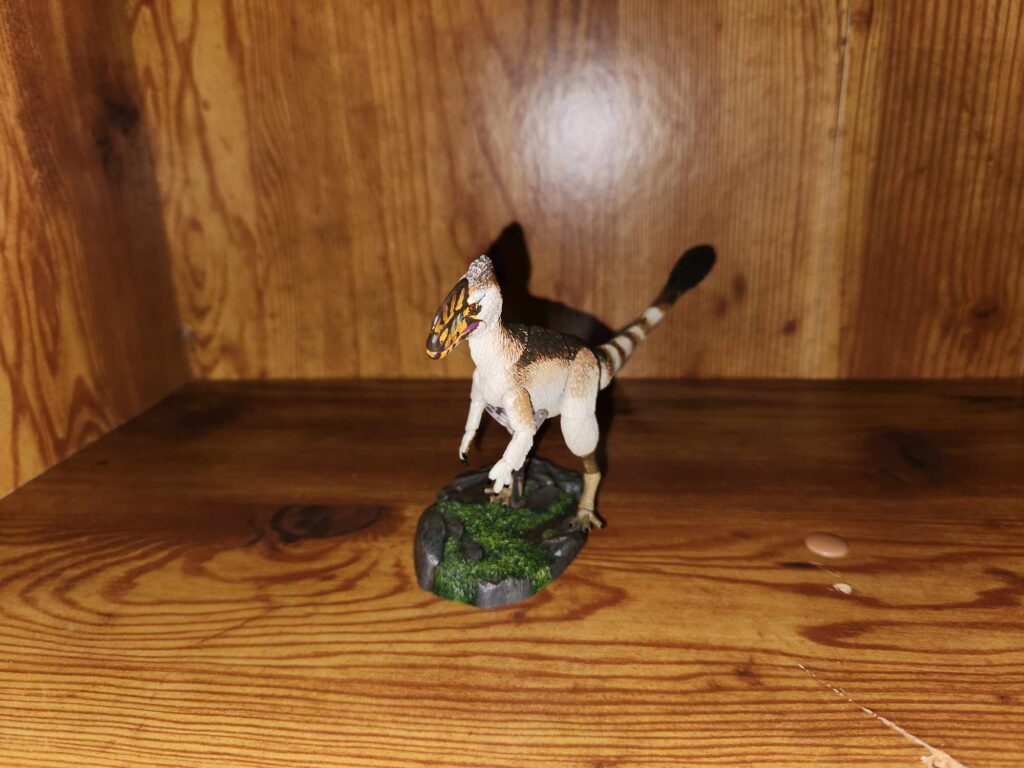
The beak and crest are orange, with brown stripes running along the crest, and smaller blue ones on the antorbital fenestrae. The eye is gold and black, and and the mouth and tongue are dark pink. The head has a short tuft of feathers behind the neck that are dark brown. It is full of friendly expression and playfulness, hiding deadly sharp teeth behind all that color.
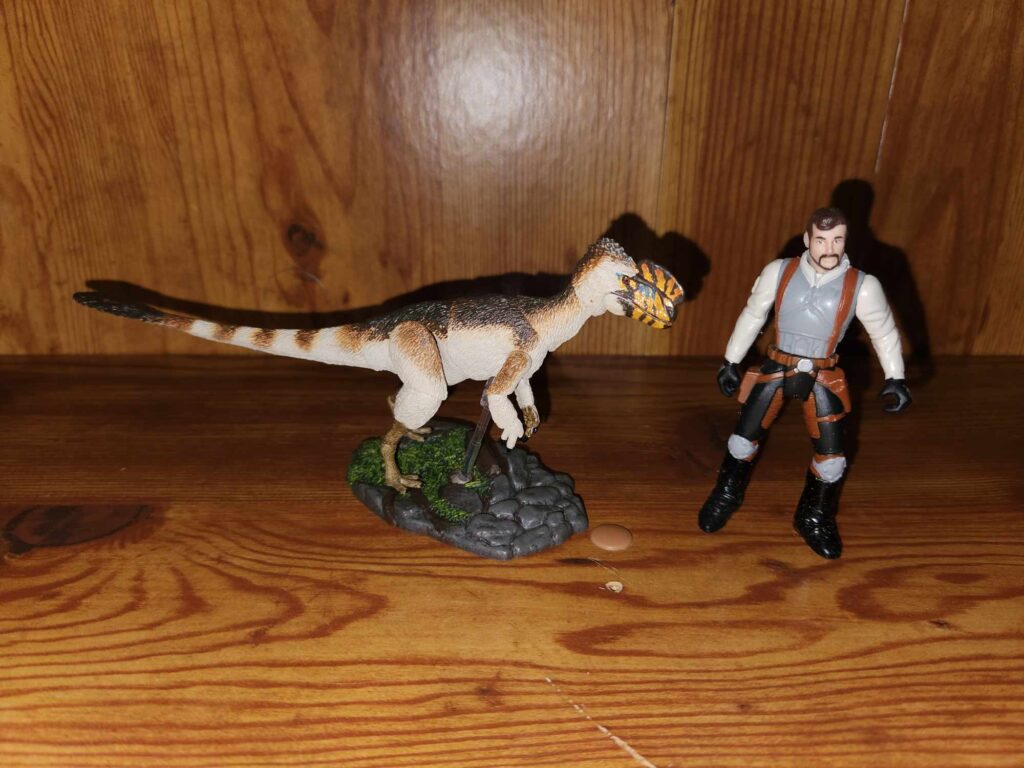
At 1/18 scale, the figure stands at 3 meters long, which makes it a perfect fit with Star Wars or Mattel Jurassic figures.

The Mattel Proceratosaurus is the same size, but it has the older reconstruction with the funky horn. The one depicted is the ultra-rare Battle Damage Proceratosaurus.

BOTM Regaliceratops happened to be nearby and joined the party.

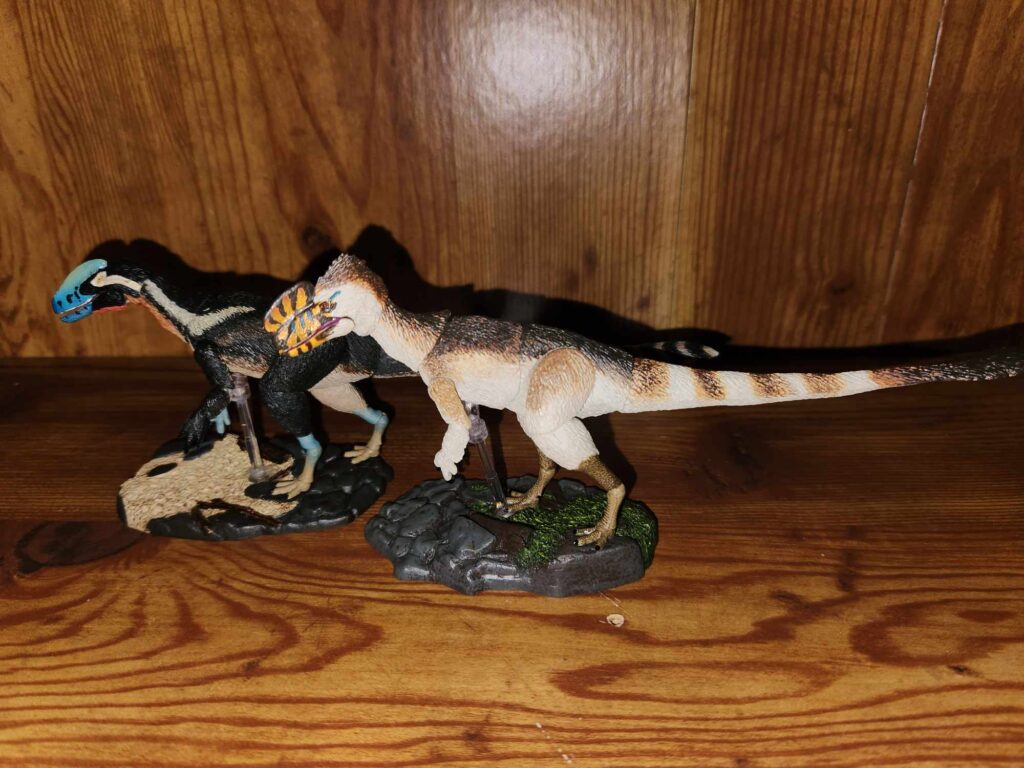

Wucky is its natural Asian partner, and I think they both look really cool together. There aren’t many Proceratosaurus figures out there. I am only aware of this figure, the Mattel figures, and the mini from PNSO. CollectA has one too, made in 2011. Mattel already gave us a Sinotyrannus, and a Kileskus is coming out soon, so this really was the year of the proceratosauria. I think that David Silva made a great choice when including small bodied tyrannosauroids to the collection, and Proceratosaurus was a deserved, and long overdue figure. That is all, thank you for reading yet another Emperor Dinobot review! Proceratosaurus can be acquired here for $39.99
Support the Dinosaur Toy Blog by making dino-purchases through these links to Ebay and Amazon. Disclaimer: links to Ebay.com and Amazon.com on the The Dinosaur Toy Blog are often affiliate links, when you make purchases through these links we may make a commission
